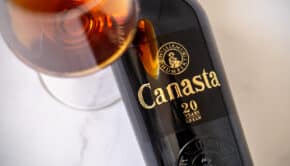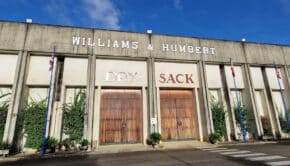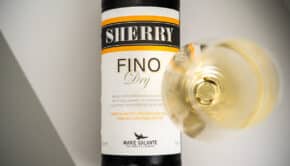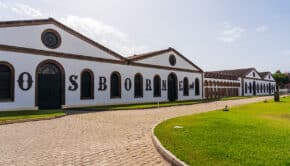Rumasa: the dark years of sherry
Rumasa is a name that few people will speak out loud in the sherry region, even though this company had an enormous impact. As the largest case of fraude to date in the history of Spain, it wiped out a big part of the region’s assets. I would even say it’s impossible to understand the current state of the sherry industry without knowing about Rumasa.
How one man’s dream led to some of the darkest years in 3000 years of sherry history…
José María Ruiz Mateos
Rumasa stands for Ruiz Mateos S.A., a holding with dozens of daughter companies, founded in 1961 by José María Ruiz Mateos and his brothers. As a son of a small almacenista Zoilo Ruiz Mateos, José María managed to sign a monster contract in 1964, becoming the exclusive supplier to Harveys of Bristol. In the contract they agreed that Ruiz-Mateos would supply all the wine they needed for the next 99 years (!).
That’s a virtually impossible deal if you know that the sweet blended sherry named Bristol Cream was a huge hit at the time (the best selling brand in the market) and required thousands of casks each year, much more than his family bodega could ever supply. Just to get an idea of the scale: until then, Harveys of Bristol had agreements with 13 bodegas.
Bodegas Internacionales
To fulfil his promise, Ruiz Mateos started buying wines from other bodegas and later entire bodegas. He had to perform a huge scale increase in their production. At the heart of the empire was the new company Bodegas Internacionales for which he built a modern complex on the outskirts of Jerez. The list of bodegas that were bought out and added to Bodegas Internacionales was endless. Williams & Humbert in 1971, Montecristo in 1973, Garvey in 1974. Later also Valdivia, Paternina, Palomino & Vergara, Pemartin, Díaz de Morales, Marques de Misa…
At the same time the group expanded into other business sectors, especially in the 1970s. As it happens the Ruiz Mateos family was related to the director of the Spanish Institute of Credit. They were also involved in the ultra-catholic Opus Dei, an important movement in Francoist Spain. It is obvious that Rumasa benefited enormously from these connections. With the money of the Harveys deal, he bought a bank, which would then supply credits to buy out bodegas, and so on. Once he bought three banks in one day. You can sense where this is going, right?

José-Maria Ruiz-Mateos
Rumasa, the euphorious giant
At its peak the group consisted of no less than 800 companies (of which 200 active, most were virtual constructions…): 18 bodegas, 18 banks, Spain’s second-largest hotel chain (Hotasa), travel agencies, insurance companies, numerous real estate and construction companies, supermarkets (Galerias Preciados), luxury stores (Loewe)… and massive headquarters in Madrid (Torres de Colón, then renamed Torres de Jerez, main picture above).
They provided work for over 60.000 people and owned / controlled about a third of the bodega industry around Jerez. In 1977 Ruíz-Mateos was the richest man in Spain. Just to indicate how powerful this holding was: in 1982 Rumasa constituted 2% of the total Spanish GDP.
But… the bubble exploded. Around 1973 the world depression and energy crisis made wine sales fall substantially. On top of this the “Little Bee” empire was largely built on credit. The winemaking business itself was relying on subsidies granted by the Spanish government in an attempt to help the traditionally poor region of Andalusia. Once Spain was part of the European Union, these kind of subsidies were considered detrimental for the free market and forbidden overnight.
There was a minimum price for wine but this was largely avoided by giving hidden discounts, leading to a sea of unsold sherry in the UK (over 1 million litres).
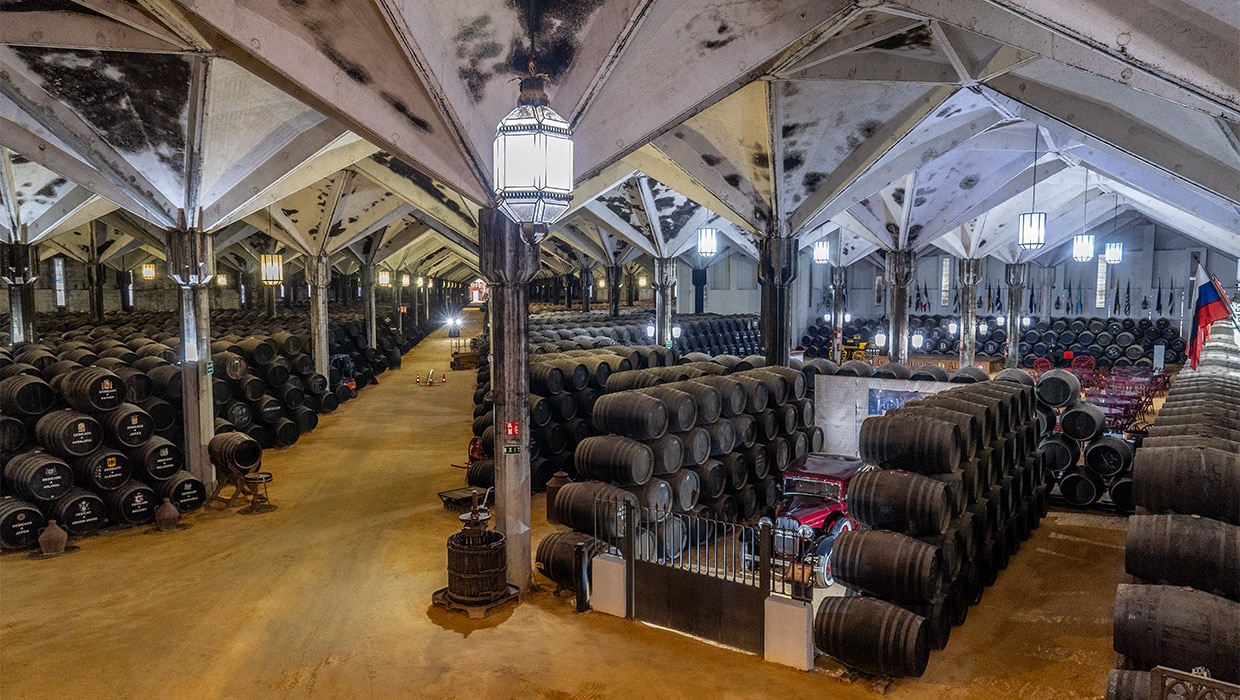
The giant Bodegas Internacionales, still the biggest winery in Europe under a single roof, now owned by Williams & Humbert
Expropriation by the Spanish government
Although Ruiz Mateos figured his company was already too big to be allowed to fail, massive holes werer found in the group’s balance sheet. Rumasa was expropriated by the Socialist government of Felipe González in February 1983. Its affairs turned out to be a huge labyrinth, with gigantic debts towards the Spanish state and endless cases of tax fraude. Ruiz Mateos denied these charges and claimed it was a big political reckoning. Conspiracy theories were formed, Ruiz Mateos fled to London and Germany, one big soap.
I doubt we will ever know the truth, but the end result is clear: a big card house suddenly collapsed and many of the sherry bodegas, some of them truly historic names, were suddenly dismantled and sold off by the Spanish government. Bodegas Internacionales, Díez-Merito, Pemartin and Bertola were bought by Rioja entrepreneur Marcos Mendizábal. He sold off Bodegas Internacionales (now called Williams & Humbert) in 1994. Garvey was sold to a German company. Other assets and stocks were fragmented and sold off as well.

Nueva Rumasa
Nueva Rumasa
After the group was cut into pieces and privatised, José María Ruiz Mateos fled several times but eventually served prison time. He bounced back, founded his own political party and became member of the European Parliament. He was even (controversially) acquitted for a big part of the fraud scandals by the Spanish Supreme Court in 1999! Another case of political involvement? Whatever the underlying reasons may have been, in 2005, history started to repeat itself.
Ruiz Mateos started Nueva Rumasa, a new group of 117 companies this time. Most of them based abroad in The Netherlands and financial paradises of South-America – the same kind of spider web of seemingly unrelated companies.
The history repeats
Some of the bodegas that once belonged to Rumasa, including Garvey which was sold to a German company, were now bought back by Nueva Rumasa. It quickly became clear that history was repeating itself. To cut a long story short: it didn’t work out (again). In 2011, this group faced a debt of € 700 millions and was accused of misleading investors. Ruiz-Mateos was apprehended and dismissed from his functions (the head of the Consejo Regulador of the D.O. Jerez-Xérès-Sherry among others).
The group was sold to a vulture capitalist called Back in Business, in a financial process said to be hugely complex. However, with the head of this capital provider in jail for fraude in another case (Marsans), the mess was as big as it was in the 1980s.
José María Ruiz-Mateos died in September 2015 while facing several criminal charges. A number of his 13 children are still being investigated. His first wife Teresa Rivero de Sánchez-Romate was convicted for financial fraude in 2017.
Consequences for the D.O. Jerez – Xérès – Sherry
Usually I’m not very interested in these kind of financial / commercial stories, so why am I telling you this? Well, Rumasa and Nueva Rumasa have drastically changed the sherry industry over the last 50 years, even beyond recognition I would say.
The euphoric Rumasa ‘success story’ led to a huge increase of vineyard surface in the sherry area, from around 7.000 to 23.000 hectares. Production was brought to an enormous scale while at the same time artificially blowing up demand figures through huge credit deals and a ‘wine lake’ in England. Vague products were sold to supermarkets in large ‘buyers own brand’ deals. Everything was focused on sales numbers, while at the same time starting a downward spiral of lowering prices, both towards grape growers and towards retailers.
Roughly speaking, this was achieved in two ways. On the one hand lowering costs through the rapid modernization of the industry and through upscaling. The other solution was lowering the quality, which was probably the biggest problem in the long run. It highly influenced the consumer perception of sherry, a problem the industry is still struggling with today. Add to this the fact that so much volume was controlled by only a few people (Rumasa controlled up to a third of all bodegas) and you get an explosive situation for the entire region.
A disrupted sherry market
A traditionally calm and friendly market was turned upside down. Following the scandals, bodegas were sold, sold again, split, merged, and numerous brands changed owners. Due to the lowering prices many competitors were forced to close down. In 1960 there were 350+ bodegas and now there are around 60. Rumasa may have been at the pinnacle but it wasn’t the only responsible for this crisis. The bodegas that survived were now confronted with a market largely based on cheap supermarket blends, which weren’t generating profit.
Consumers eventually turned away from such products which led to important declines in sales – a decline that still hasn’t been halted today. At the end of the 1970’s, over 150 million liters of sherry were exported each year. In 2017 that was a mere 20 million. Even though the sherry business has been working hard to present much higher quality standards and regain the trust of wine drinkers, sherry wines still haven’t recovered from Rumasa.
What happened to the wines?
It’s virtually impossible to track down all these brands, let alone their soleras that have been involved in the two Rumasa scandals. Some have been taken apart or mingled to form new soleras. Here’s an overview of the bodegas that have been inflicted:
- Williams & Humbert
Bought by Rumasa in 1972 and the cornerstone of Bodegas Internacionales together with Zoilo Ruiz Mateos. After the dismantling of Rumasa it was sold to Marcos Eguizabal, then the Dutch Ahold (Albert Heijn) and in 1995 to José Medina y Cia. Dry Sack is still a strong brand. They also own the brands Don Zoilo and Gran Duque de Alba. - Harveys
This company signed the original contract with Ruiz-Mateos to supply all of their wine. In the end they bought Bodegas Misa from Rumasa in 1983. Now part of the Grupo Emperador, together with Bodegas Fundador, Bodegas Terry and Bodegas Garvey. - Valdivia
Taken over by José y Miguel Martín (Huelva) primarily to have a place in the sherry region to produce official sherry casks. - Sandeman
This company struck a deal with Nueva Rumasa in 2004, selling all Sandeman installations: vineyards, bodegas, stocks but not the brands. In return Rumasa would continue to produce Sandeman products. - Dios Baco
This bodega was started by purchasing the bodegas Palomino & Vergara and part of its soleras, which used to be part of Rumasa. - Díez-Mérito
A merger of Diez Hermanos with the Bodegas Marques de Misa, this company was swallowed up by Rumasa in one of their last takeovers. After the collapse the bodegas and its brands were sold to Marcos Eguizabal. Then in 2016 it was acquired by the Espinosa family. - Bodegas Tradición
Not really involved, but they bought some of the oldest wines from Bobadilla, Paternina, Sandeman and Harveys. They formed the base of this recent bodega. - Then there is a whole series of bodegas that were simpled swallowed by (Nueva) Rumasa and that disappeared into history books. Fernando A. de Terry, Palomino & Vergara, Diaz Morales, Vergara & Gordon, Varela, Teresa Rivero, Pemartin, Otaolaurruchi, Valderrama…



